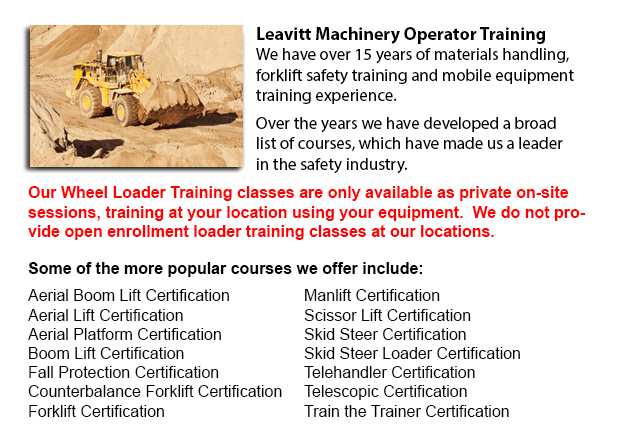
Lift trucks are obtainable in a variety of various models which have various load capacities. Nearly all typical lift trucks utilized in warehouse settings have load capacities of 1-5 tons. Bigger scale models are utilized for heavier loads, like for instance loading shipping containers, may have up to fifty tons lift capacity.
The operator could use a control in order to raise and lower the tines, which can likewise be called "blades or tines". The operator of the forklift could tilt the mast to be able to compensate for a heavy loads tendency to tilt the tines downward. Tilt provides an ability to function on uneven ground too. There are annual contests for experienced lift truck operators to compete in timed challenges as well as obstacle courses at local forklift rodeo events.
General operations
Lift trucks are safety rated for cargo at a particular limit weight as well as a specified forward center of gravity. This very important info is supplied by the manufacturer and positioned on a nameplate. It is important cargo do not go beyond these details. It is against the law in a lot of jurisdictions to interfere with or take out the nameplate without getting consent from the lift truck manufacturer.
Most forklifts have rear-wheel steering so as to increase maneuverability within tight cornering situations and confined areas. This type of steering varies from a drivers' initial experience with other motor vehicles. As there is no caster action while steering, it is no needed to utilize steering force to be able to maintain a constant rate of turn.
Unsteadiness is another unique characteristic of lift truck use. A continuously varying centre of gravity happens with each and every movement of the load amid the forklift and the load and they have to be considered a unit during operation. A forklift with a raised load has gravitational and centrifugal forces which could converge to cause a disastrous tipping accident. In order to avoid this possibility, a lift truck should never negotiate a turn at speed with its load raised.
Forklifts are carefully designed with a certain load limit utilized for the forks with the limit lessening with undercutting of the load. This means that the freight does not butt against the fork "L" and would lower with the rise of the blade. Generally, a loading plate to consult for loading reference is placed on the forklift. It is dangerous to utilize a forklift as a personnel lift without first fitting it with certain safety devices such as a "cage" or "cherry picker."
Lift truck use in warehouse and distribution centers
Lift trucks are an important component of warehouses and distribution centers. It is vital that the work environment they are situated in is designed in order to accommodate their efficient and safe movement. With Drive-In/Drive-Thru Racking, a forklift needs to go within a storage bay which is multiple pallet positions deep to set down or obtain a pallet. Operators are normally guided into the bay through rails on the floor and the pallet is placed on cantilevered arms or rails. These tight manoeuvres require expert operators so as to complete the task efficiently and safely. In view of the fact that each pallet needs the truck to go into the storage structure, damage done here is more common than with other types of storage. If designing a drive-in system, considering the size of the blade truck, along with overall width and mast width, have to be well thought out in order to be certain all aspects of an effective and safe storage facility.
-
Fall Protection Ticket Red Deer
Fall Protection Ticket Red Deer - The number one reason of death in the construction industry come from fall-related incidents. There is more possibility for fall accidents depending upon the kinds of work being done in your workplace. Therefore, kno... More -
Overhead Crane Certification Red Deer
Overhead Crane Certification Red Deer - The overhead crane certification course is a course that is designed to help trainees, even if they have language or literacy limitations. The course comprises a practical hands-on training session and a classr... More -
Heavy Equipment Certification Red Deer
Heavy Equipment Certification Red Deer - Heavy duty vehicles are big pieces of machines which are usually known as heavy equipment. It is a broad term that literally includes whatever big utility vehicle in the area of agricultural and forestry imple... More -
Heavy Equipment Operator Classes Red Deer
Heavy Equipment Operator Classes Red Deer - A person who has the correct training to be able to use a particular kind or piece of machine is referred to as an equipment operator. There are different ways that an equipment operator can become trained... More -
Forklift Training Programs Red Deer
Forklift Training Programs Red Deer - Are you searching for a job as a driver of a forklift? Our regulatory-compliant mobile equipment operator training offers instruction in kinds of lift trucks, pre-shift check, fuel types and dealing with fuels, a... More -
Crane Safety Training Red Deer
Crane Safety Training Red Deer - Both crane driver and their supervisors must know all the potential problems related to the operation of an overhead crane. All over North America, there is legislation which provides rules for the safe inspection, ma... More -
Aerial Lift Training Red Deer
Aerial Lift Training Red Deer - An aerial work platform is a mechanized access platform. This device provides access to otherwise inaccessible places for people or equipment. Likewise called an elevating work platform or aerial device, the machinery... More -
Wheel Loader Operator Training Red Deer
Wheel Loader Operator Training Red Deer - In order to lift significant cargo, industrial cranes use pulleys and levers. Before, Romans used cranes in order to put up big monuments making the origin of these machinery at least 2,000 years ago. Numerou... More

Forklift Training Red Deer
TOLL FREE: 1-888-254-6157
Red Deer, Alberta
forklifttrainingreddeer.com
Email Us
About Us


